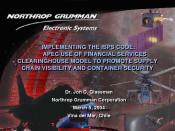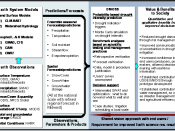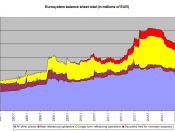IMS - Data Warehouse
In a large financial services organization, you have been asked by the Marketing Director to give him a report on the development of a date warehouse. This will, he sees, provide a wide variety of sales/marketing information.
1) In this report, give him the details as to why & how a data warehouse differs from a traditional database. (40%)
2) Identify the main functions that might be performed by such a system with respect to marketing requirements (40%)
3) List & explain the benefits that might bring to the organization. (20%)
(Nov 2003 - Qn 3 , Nov 02 - Qn 5, Nov 01 - Qn 1)
Connolly et al (1998) offered the following definition of a data warehouse:
"a subject-orientated, integrated, time variant and non-volatile collection of data in support of the management decision making process".
Subject-orientated: a data warehouse is organised around subject-groups within the enterprise e.g.
customer, sales etc. This reflects the need for strategic decision support, rather than operational support
Integrated: data used within different applications is collected together. This data must be cleansed to become consistent. This data cleansing required to populate the warehouse can be difficult, time consuming and costly.
Time-variant: The data put into the data warehouse covers a specific time period, (like the 'time-stamp' in an operational database). The time variance also covers the length of time that the data is held for; that is between updates. Data Warehouses are not updated on a very frequent basis, often it is monthly or quarterly.
Non-volatile: The data is not updated in real time. New data is normally added to the database as an addition and not as a replacement. This sort of technology has only become a possibility in the last five years or so with the availability of...


